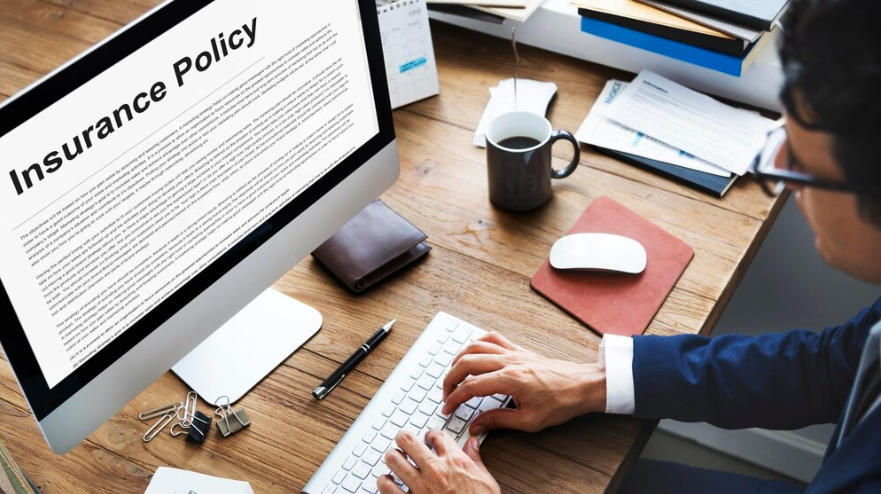Introduction
Running a business comes with risks, from property damage and lawsuits to employee injuries and data breaches. Having the right insurance coverage is essential to protect your company from financial losses and ensure long-term stability. However, choosing the right policies can be complex, as different businesses require different types of protection.
This guide will help you understand the key types of business insurance, how to assess your coverage needs, and steps to ensure your company is fully protected.
1. Why Business Insurance Is Essential
Business insurance provides financial protection against unexpected events that could disrupt operations or result in significant losses. Without the right coverage, a single lawsuit or natural disaster could force a business to close permanently.
Key Benefits of Business Insurance
- Covers property damage from fire, storms, or vandalism.
- Protects against liability claims, such as customer injuries or legal disputes.
- Ensures continuity by covering lost income during disruptions.
- Provides workers’ compensation for employee injuries.
- Helps businesses meet legal and contractual requirements.
2. Key Types of Business Insurance
Every business has unique risks, but most companies benefit from a combination of the following insurance policies:
2.1. General Liability Insurance
Protects against lawsuits related to bodily injury, property damage, and advertising claims. This is essential for businesses that interact with customers or clients.
Example: If a customer slips and falls in your store, general liability insurance can cover medical costs and legal fees.
2.2. Property Insurance
Covers physical assets, such as buildings, equipment, and inventory, against damage from fire, theft, vandalism, or natural disasters.
Example: If a fire destroys office computers, property insurance helps replace them.
2.3. Business Interruption Insurance
Compensates for lost income if your business is forced to close temporarily due to an insured event.
Example: If a hurricane damages your store, this insurance can cover rent, payroll, and lost revenue while repairs are made.
2.4. Workers’ Compensation Insurance
Provides benefits for employees who suffer work-related injuries or illnesses, covering medical expenses and lost wages. Most states require this insurance by law.
Example: If an employee is injured while operating machinery, workers’ compensation covers their medical bills and recovery costs.
2.5. Professional Liability Insurance (Errors & Omissions Insurance)
Protects businesses that provide professional services against claims of negligence, errors, or omissions.
Example: If an accountant makes a financial error that costs a client thousands of dollars, this policy helps cover legal defense costs.
2.6. Cyber Liability Insurance
Covers financial losses from data breaches, cyberattacks, and hacking incidents. This is crucial for businesses handling sensitive customer data.
Example: If hackers steal customer credit card information, this insurance helps with recovery costs and legal expenses.
2.7. Commercial Auto Insurance
Covers company-owned vehicles used for business purposes, including accidents, theft, and property damage.
Example: If a delivery van is involved in an accident, commercial auto insurance helps cover repair costs and liability claims.
2.8. Product Liability Insurance
Protects manufacturers, wholesalers, and retailers from claims related to defective products that cause injury or damage.
Example: If a product you sell malfunctions and injures a customer, this policy helps cover medical expenses and lawsuits.
3. How to Choose the Right Insurance Coverage
Step 1: Assess Your Business Risks
Identify potential threats specific to your industry, such as customer injuries, property damage, cyberattacks, or supply chain disruptions.
Example: A restaurant needs liability insurance for food-related illnesses, while an IT company needs cyber insurance.
Step 2: Determine Legal Requirements
Check local, state, and federal laws to ensure compliance with insurance requirements. Many businesses must carry workers’ compensation and liability insurance.
Step 3: Compare Policy Options
Research different policies and insurers to find the best coverage at a competitive price. Consider factors like coverage limits, deductibles, and exclusions.
Step 4: Consider a Business Owner’s Policy (BOP)
A BOP bundles general liability, property insurance, and business interruption insurance into a single, cost-effective package. It’s a great option for small to medium-sized businesses.
Step 5: Work with an Insurance Professional
An insurance broker or agent can help assess your risks, explain policy options, and recommend the best coverage for your business.
4. Common Business Insurance Mistakes to Avoid
- Underestimating Risks: Failing to account for all potential threats can leave your business vulnerable.
- Choosing the Cheapest Policy: Low-cost plans may have insufficient coverage, leading to financial losses in case of an emergency.
- Not Updating Coverage: As your business grows, insurance needs change. Regularly review policies to ensure adequate protection.
- Ignoring Cyber Risks: Many small businesses think they won’t be targeted by hackers, but cyberattacks are a growing threat.
- Skipping Workers’ Compensation: Even if not legally required, this coverage protects both employees and employers from costly injury claims.
Conclusion
The right insurance coverage is essential for protecting your business from financial losses, lawsuits, and operational disruptions. By understanding your risks, selecting appropriate policies, and regularly reviewing coverage, you can safeguard your company’s future.
Investing in comprehensive business insurance not only provides peace of mind but also ensures your business remains resilient in the face of unexpected challenges.

